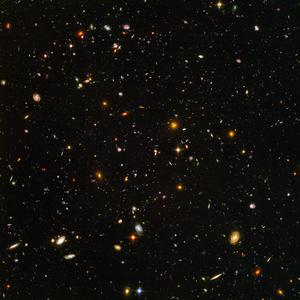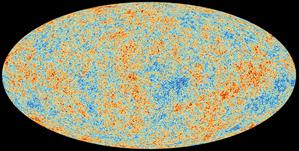Glossarbegriffe: Kosmologie
Description: Kosmologie leitet sich von den griechischen Wörtern kosmos (Harmonie oder Ordnung) und logos (Gedanke oder Vernunft) ab. Die Kosmologie als Disziplin hat ihre Wurzeln in der Philosophie und Religion. Verschiedene Kulturen auf der ganzen Welt haben ihre eigenen Kosmologien um das Universum zu interpretieren und ihm einen Sinn zu geben. Im Laufe der Jahre hat sich die Kosmologie zu einer beobachtenden Wissenschaft mit hoher Präzision entwickelt. Ermöglicht wurde dies durch die Entwicklung fortschrittlicher boden- und weltraumgestützter Observatorien sowie durch bahnbrechende theoretische Arbeiten und Computersimulationen. Das Ziel der wissenschaftlichen Kosmologie ist, die Entwicklungsgeschichte, die Entstehung, die Struktur und die künftige Entwicklung des Universums als Ganzes auf den größten Skalen zu verstehen, indem die grundlegenden physikalischen Mechanismen, die im Universum wirken, erforscht werden.
Zugehörige Glossarbegriffe:
- Beschleunigte Ausdehnung des Universums
- Astronomie
- Astrophysik
- Urknalltheorie
- Cepheiden
- Galaxienhaufen
- Kosmologisches Prinzip
- Kosmos
- Dunkle Energie
- Dunkle Materie
- Beobachtbares Universum
- Allgemeine Relativitätstheorie
- Universum
See this term in other languages
Term and definition status: The original definition of this term in English have been approved by a research astronomer and a teacher The translation of this term and its definition is still awaiting approval
The OAE Multilingual Glossary is a project of the IAU Office of Astronomy for Education (OAE) in collaboration with the IAU Office of Astronomy Outreach (OAO). The terms and definitions were chosen, written and reviewed by a collective effort from the OAE, the OAE Centers and Nodes, the OAE National Astronomy Education Coordinators (NAECs) and other volunteers. You can find a full list of credits here. All glossary terms and their definitions are released under a Creative Commons CC BY-4.0 license and should be credited to "IAU OAE".
Zugehörige Medien
Hubble Ultra Deep Field
Bildnachweis: NASA, ESA, and S. Beckwith (STScI) and the HUDF Team credit link
License: CC-BY-4.0 Creative Commons Namensnennung 4.0 International (CC BY 4.0) icons
Cosmic Microwave Background Radiation
Bildnachweis: ESA/Planck Collaboration credit link
License: CC-BY-SA-4.0 Creative Commons Namensnennung - Weitergabe unter gleichen Bedingungen 4.0 International (CC BY-SA 4.0) icons










